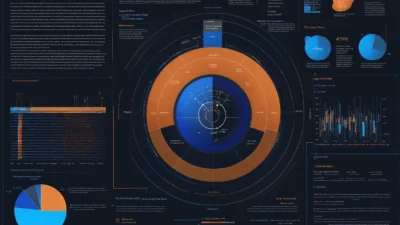In today’s rapidly evolving digital landscape, cybersecurity is more critical than ever. With the increasing frequency of cyberattacks, organizations must adopt advanced methods to protect their assets. One such method is automation, which has become an essential tool for improving cybersecurity strategies. By streamlining security tasks and minimizing human error, automated systems offer businesses a powerful solution to combat cyber threats efficiently.
What is Security Automation?
Security automation refers to the use of software tools and systems to automatically perform security-related tasks that were once manually handled by human teams. These tasks include threat detection, vulnerability scanning, incident response, and even the remediation of security breaches. By incorporating technologies such as artificial intelligence (AI) and machine learning (ML), security systems can evolve to identify and respond to new and emerging threats faster and more accurately than ever before.
This innovation is essential in a time when cyber threats are growing in both sophistication and volume. Automation allows organizations to scale their security efforts and ensures that threats are detected and mitigated in real time.
Key Benefits of Automating Cybersecurity
Enhanced Threat Detection
One of the most significant advantages of automation is its ability to detect and respond to threats more quickly. Automated systems continuously monitor network traffic, user behavior, and system configurations to identify any abnormal patterns that might signal a cyberattack. This round-the-clock vigilance ensures that potential threats are identified early, reducing the window of opportunity for attackers.
Reduced Workload for Security Teams
Automation significantly eases the burden on security teams by handling repetitive tasks such as monitoring alerts, patching vulnerabilities, and applying security policies. This allows security professionals to focus on more strategic tasks, such as analyzing complex threats and designing long-term security strategies. By reducing manual labor, automation enhances productivity and allows teams to respond more effectively to critical situations.
Consistent Security Protocols
Human error is often a major cause of security breaches, whether it’s due to missed patches or inconsistent application of security policies. Automated systems eliminate these risks by ensuring that security measures are consistently applied across the entire network. With automation, businesses can enforce uniform security policies that are always up to date, reducing the likelihood of vulnerabilities caused by oversight or mistakes.
Challenges of Implementing Automation in Cybersecurity
While the benefits of automation are clear, it’s important to recognize that there are challenges to consider. Integrating automated systems with existing security infrastructure can be complex. Effective automation tools must work seamlessly with firewalls, endpoint protection, intrusion detection systems (IDS), and other critical security tools. If the integration process is not smooth, it could create gaps in security coverage, leaving the organization exposed to threats.
Additionally, while automation can handle routine tasks, human oversight is still necessary for more complex situations. Automated systems may encounter false positives or miss advanced threats that require human intervention. It’s essential to maintain a balance between automation and human expertise to ensure that security decisions are accurate and effective.
Essential Features of Effective Security Automation Tools
When selecting security automation tools, businesses should focus on systems that offer the following key features:
-
Seamless Integration: The ability to work with existing security infrastructure without causing disruptions or inefficiencies.
-
Comprehensive Coverage: Automated systems should handle all aspects of cybersecurity, from threat prevention and detection to incident response and recovery.
-
Scalability: As cybersecurity threats evolve, so too must the tools used to combat them. Effective automation tools should be scalable, ensuring they can adapt to future needs.
-
Continuous Updates: Automated systems should be regularly updated to keep pace with new threats and vulnerabilities.
Why Automation is the Future of Cybersecurity
The digital world is continuously changing, and with it, the complexity of cyber threats. As businesses grow and technology advances, the need for robust, scalable, and efficient security measures becomes more pressing. Automation is the answer to this growing demand.
Organizations that adopt security automation tools will be better equipped to manage and mitigate cyber risks. These tools provide faster response times, reduce the risk of human error, and ensure consistent enforcement of security policies. By embracing automation, businesses can strengthen their defenses and be better prepared for the challenges of tomorrow’s cybersecurity landscape.
Conclusion
Cybersecurity automation has revolutionized how businesses defend themselves against cyber threats. With benefits such as enhanced detection capabilities, reduced workload for security teams, and more consistent security measures, automation is an essential part of any modern cybersecurity strategy. However, it’s important for organizations to carefully consider the challenges involved, particularly regarding integration and human oversight. By choosing the right tools and striking the right balance, businesses can significantly strengthen their security posture and protect themselves against the evolving landscape of digital threats.




